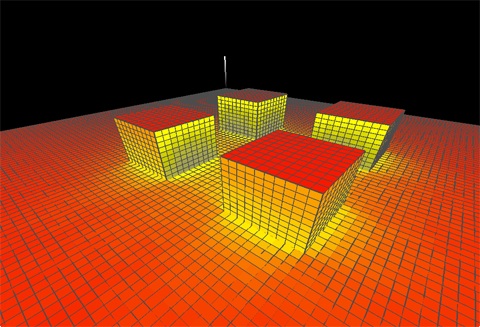
Image depicting the proportion of direct shortwave radiation from the sun in a test case with four buildings. Computations are performed in near real-time using the graphics card's processing capabilities.
 Image depicting the proportion of direct shortwave radiation from the sun in a test case with four buildings. Computations are performed in near real-time using the graphics card's processing capabilities.
Image depicting the proportion of direct shortwave radiation from the sun in a test case with four buildings. Computations are performed in near real-time using the graphics card's processing capabilities.